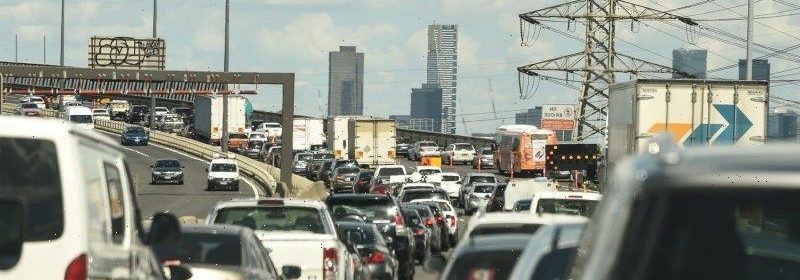Summer roadworks: a bridge too far for Melbourne motorists?

The latest traffic nightmare for Melburnians – the crossing of the Westgate Bridge during this Christmas-New Year period – has been planned for months and communicated for weeks.
Traffic volumes are at their lowest at this time of year, causing disruption to the least number of people. This year, the bridge maintenance program includes the centre lane which has meant that only one lane can be left open to safely deliver the works.
This, of course, does nothing to reduce the pain felt by motorists. Delays are exceeding an hour daily for mostly holiday, recreational and non-work related travel.
In fact, for many impacted drivers, there is no worse time to undertake these works than right now, when the family is trying to move around and get to wonderful gatherings and events that have been prohibited in recent years. Christmas 2022, the year the family was able to get together again, now horribly disrupted by roadworks at the most inconvenient time – or so it would seem.
Until recent years, the standard practice by state road and transport agencies across Australia was to minimise delays to the travelling public by undertaking roadworks after 9pm and before 5.30am, creating very short windows of opportunity for road construction contractors to get access to the road network, close the lanes, set up the traffic management arrangements and then undertake the works; before shutting down again in time to pull all the traffic management out before the 5:30am deadline to open for the morning peak travel time.
The practical outcome of this standard approach resulted in a window of only six hours to remove, compact and replace the distressed road section. This resulted in many small sections of work night after night; week after week; and month after month to get a single road length repaired and replaced.
Internationally, the use of road closures by contra-flowing traffic on the alternate carriageway to give effect to rapid, efficient and productive work flows has delivered significant economic and social benefit for the travelling public and the freight task, and has been the norm for many years.
There is also the added benefit of better quality road construction outcomes that are achieved through continuous access to the traffic lane. Shorter, more disruptive, but more efficient roadworks activities, have been standard practice for many years and are an accepted part of the travelling public’s experience, particularly across Europe.
With the start of the level crossing removal projects in greater Melbourne, this approach has also been extensively adopted to great effect in our own backyard. Significant closures over many days and/or weeks, to provide continuous 24 hour access to sections of road and rail infrastructure have enabled rapid construction progress to be made in periods that could not have been imagined only a few years ago.
This change in the way road construction is delivered in our densely populated cities has been a genuine partnership between the private and public sectors with excellent communication to the travelling public.
The anticipated public outcry did not happen when roads were closed as the community understood that the trade-off between a short, very disruptive closure, compared with a long period of constant disruption always fell on the side of – just get it done asap! This was a fundamental shift in the way in which our community representatives thought about the disruption caused by necessary upgrades and maintenance to our infrastructure and has become the accepted “new normal”.
Does this mean that there is no room for improvement – definitely not!
Every project must be exceptionally well planned, even better communicated to the travelling public including the “reason” why these works are necessary – what is being done and why – which is all part of the transformation that is taking place.
There is also a need to ensure that we take the opportunity to incorporate more resilient materials that are produced with lower emissions technology. This will reduce the number of times that the travelling public is disrupted as well as the duration of the disruption. There are serious and ongoing efforts to transform the way in which our infrastructure is planned, designed, constructed and maintained that will provide the step change that the Australian community are demanding of our state road and transport agencies on a journey to a more resilient and mobility focussed network approach to transport solutions.
Michael Caltabiano is CEO of the National Transport Research Organisation.
____________________________________________________________________________________________________________
More from our award-winning columnists
Sky-high cost-cutting: Do we really need two pilots in the cockpit? With advances in technology, won’t one pilot on a flight do? Here’s what QF32 hero and ‘Sully’ Sullenberger think – Peter FitzSimons
The tea: With 61 bills passed since the Albanese government came into power in May 2022, who – or what – wins the prize for the biggest storm in a teacup? – Ross Gittins
Behind the power: When you write a book about Scott Morrison, and are more than familiar with the ways the former PM has justified his behaviour, surely you shouldn’t feel sorry for him? – Sean Kelly
Most Viewed in National
From our partners
Source: Read Full Article
